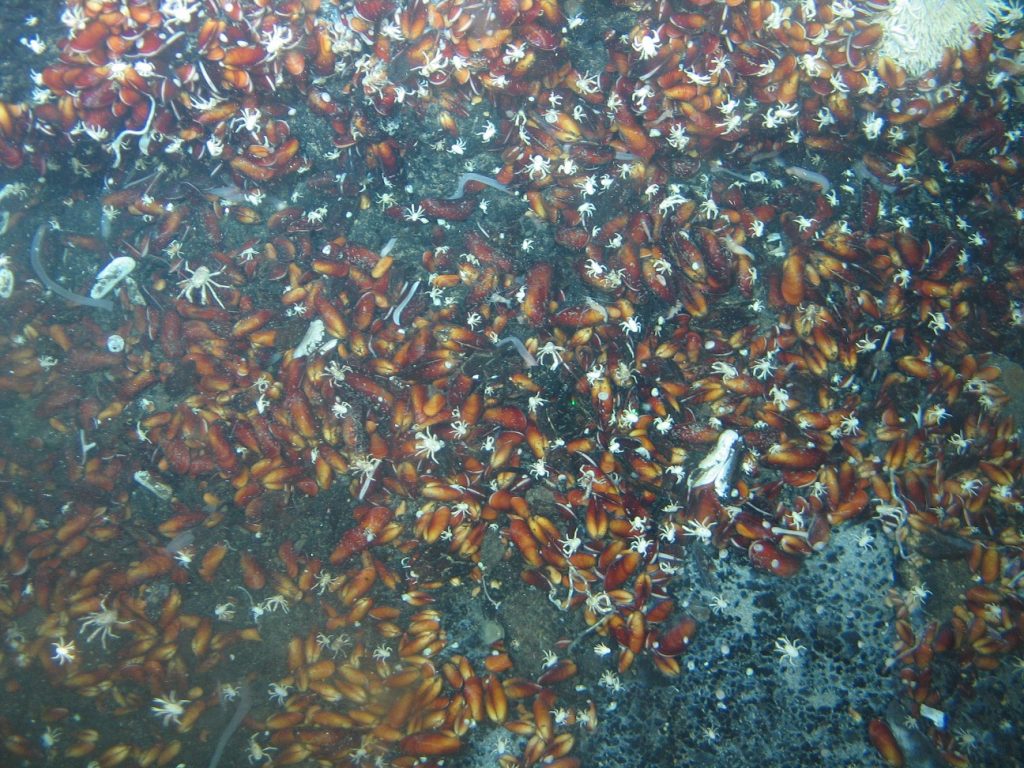
I have a new paper out today: Population structure of Bathymodiolus manusensis, a deep-sea hydrothermal vent-dependent mussel from Manus Basin, Papua New Guinea.
We sampled two sites in Papua New Guinea where these deep-sea mussels aggregate and looked at their genes to determine if there was any population structure across this relatively small spatial scale (~40 km). We found one homogeneous population. We also looked at representatives from other ocean basins and determined that mussel populations within Manus Basin are younger than those in neighboring basins. This is a pattern we’ve observed in several other studies as well.
This is not, by any stretch, a ground-breaking, paradigm-shifting study. But studies like this, baseline, foundation-building studies, are absolutely essential for conservation biology.
Two-and-a-half kilometers from one of our sites lies Solwara 1. In case you haven’t been paying attention to this website, Solwara 1 is slated to become the first deep-sea hydrothermal vent mine in history, and the success or failure of Solwara 1 will herald a new era in deep-sea exploitation.

Over almost a decade we’ve been slowly painting a picture of ecology, biodiversity, distribution, and resilience at Solwara 1 and surrounding hydrothermal vents sites. What we’ve learned is what we’ve always suspected: though there are broad, general patterns in the deep sea, every hydrothermal vent system is unique; our understanding of these iconic ecosystems remains limited; and, while we can begin to make predictions about how large scale mining will impact hydrothermal vents communities, there are still some substantial knowledge gaps in our understanding of seafloor processes. This new paper is another brush stroke in that still-wet painting.
For a broader look at our work in Papua New Guinea, see the rest of our papers:
- The spatial scale of genetic subdivision in populations of Ifremeria nautilei, a hydrothermal-vent gastropod from the southwest Pacific
- Comparative Population Structure of Two Deep-Sea Hydrothermal-Vent-Associated Decapods (Chorocaris sp. 2 and Munidopsis lauensis) from Southwestern Pacific Back-Arc Basins
- Genetic diversity of hydrothermal-vent barnacles in Manus Basin
- Population structure of Bathymodiolus manusensis, a deep-sea hydrothermal vent-dependent mussel from Manus Basin, Papua New Guinea
And see some of our broader papers discussing deep-sea mining in Papua New Guinea and beyond:
- VentBase: Developing a consensus among stakeholders in the deep-sea regarding environmental impact assessment for deep-sea mining–A workshop report
- Application of Biological Studies to Governance and Management of the Deep Sea
- Impacts of anthropogenic disturbances at deep-sea hydrothermal vent ecosystems: A review
- Biodiversity loss from deep-sea mining